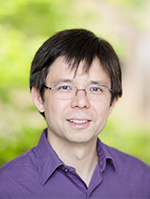用于光学纳米镊子和芯片级红外显微光谱仪的工程光物质相互作用
日期:2022/07/08 – 2022/07/08
学术讲座:用于光学纳米镊子和芯片级红外显微光谱仪的工程光物质相互作用
主讲人:Kenneth Crozier, Professor, Physics and Electronic Engineering, University of Melbourne
时间:2022年7月8日(周五)上午10:00 – 11:30
地点:via Feishu (Meeting ID: 830 6309 5402, Passcode: 419424)
讲座摘要
We discuss two applications of engineering light-matter interactions at the nanoscale.
The first is for optical nanotweezers based on plasmonic nanoapertures. We use simulated annealing to design the latter. The nanoapertures have irregular shapes that are chosen by our algorithm. We present electromagnetic simulations that show that these produce stronger field enhancements and extraction energies than conventional nanoapertures for optical nanotweezers. The designs are realized by fabricating precision apertures with a helium/neon ion microscope and are studied by cathodoluminescence and optical trapping.
The second is for chip-scale infrared microspectrometers. The identification of chemicals from their mid-infrared spectra has applications that include industrial production of chemicals, food production, pharmaceutical manufacturing, and environmental monitoring. This is generally done using laboratory benchtop tools, such as the Fourier transform infrared spectrometer. Although such systems offer high performance, alternative platforms offering reduced size, weight, and cost can enable a host of new applications. Here a compact microspectrometer platform for chemical identification, comprising a mid-infrared metasurface integrated with a lightweight (≈1 g) and very small (≈1 cm3) microbolometer-based thermal camera is experimentally demonstrated.
主讲人简介
 Kenneth Crozier is Professor of Physics and Electronic Engineering at the University of Melbourne. Crozier is also Deputy Director of the ARC Centre of Excellence for Transformative Meta-Optical Systems. Prior to joining the University of Melbourne, Kenneth Crozier was an associate professor at Harvard University. He received his undergraduate degrees in Electrical Engineering (with first class honours, with LR East Medal) and Physics at the University of Melbourne. He received his MSEE and PhD in Electrical Engineering from Stanford University. In 2008, he was a recipient of a CAREER Award from the National Science Foundation (USA) and a Loeb Chair at Harvard, an endowed position for junior faculty. In 2014, he was awarded an Innovation Fellowship from VESKI (Victorian Endowment of Science, Knowledge and Innovation) on his return to Australia.andte Chemie (1) with over 2,000 citations and an h-index of 17.
Kenneth Crozier is Professor of Physics and Electronic Engineering at the University of Melbourne. Crozier is also Deputy Director of the ARC Centre of Excellence for Transformative Meta-Optical Systems. Prior to joining the University of Melbourne, Kenneth Crozier was an associate professor at Harvard University. He received his undergraduate degrees in Electrical Engineering (with first class honours, with LR East Medal) and Physics at the University of Melbourne. He received his MSEE and PhD in Electrical Engineering from Stanford University. In 2008, he was a recipient of a CAREER Award from the National Science Foundation (USA) and a Loeb Chair at Harvard, an endowed position for junior faculty. In 2014, he was awarded an Innovation Fellowship from VESKI (Victorian Endowment of Science, Knowledge and Innovation) on his return to Australia.andte Chemie (1) with over 2,000 citations and an h-index of 17.
